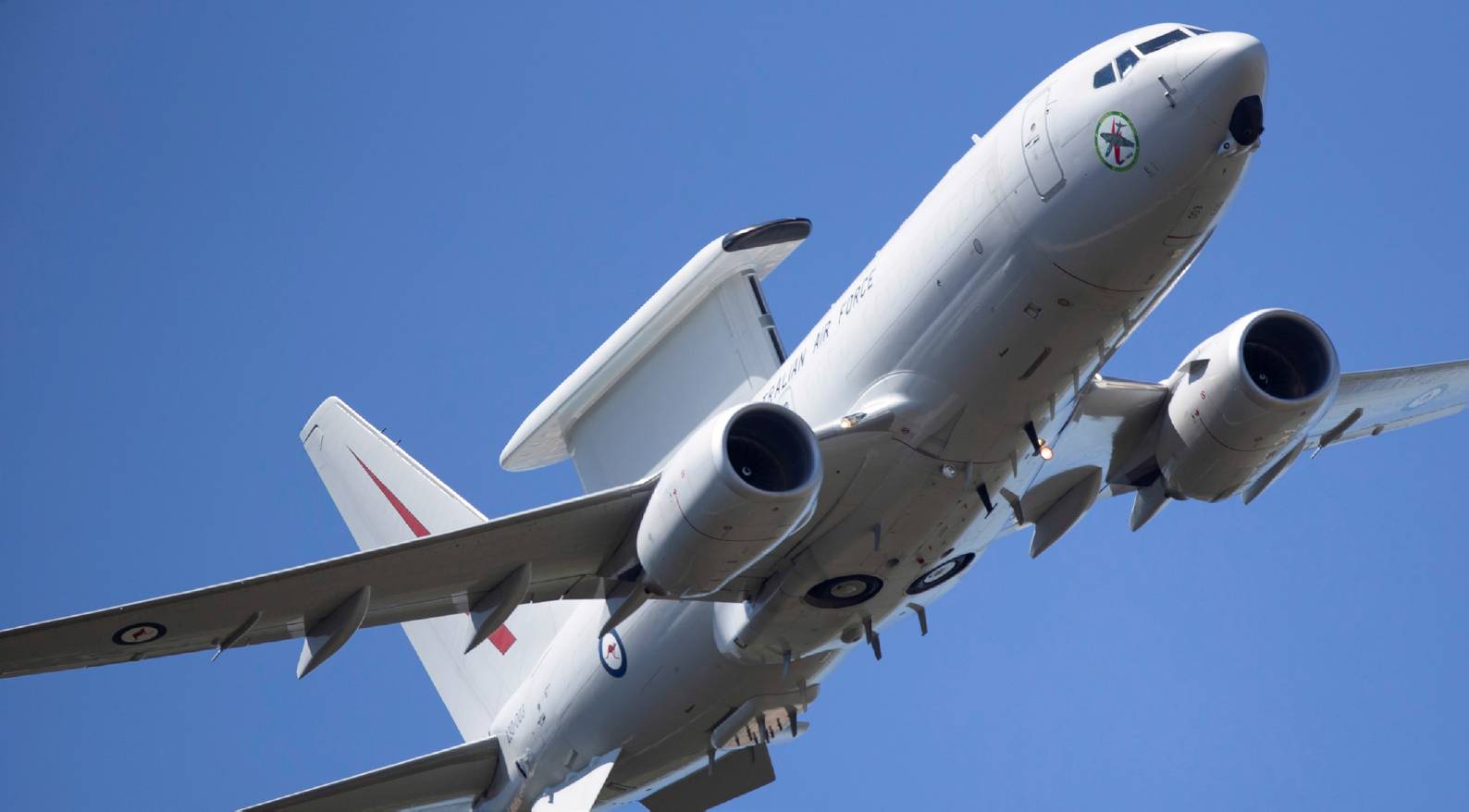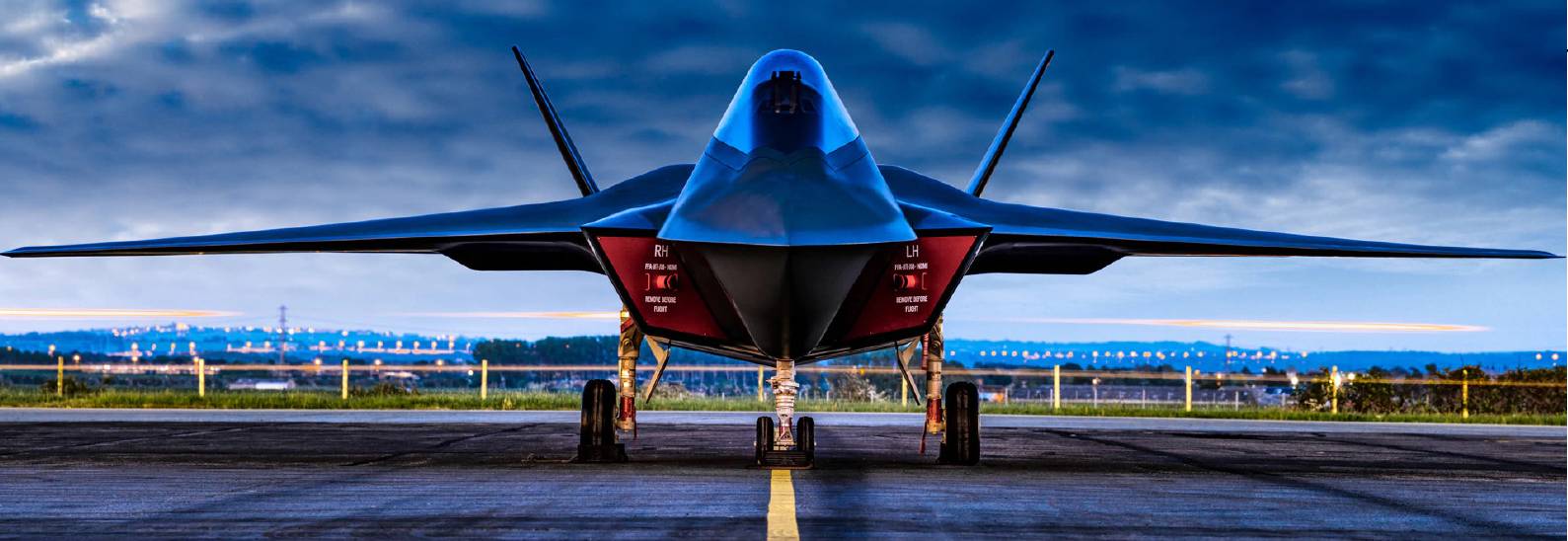DEFENCE UK Integrated Review
Destined to fail? The UK’s Integrated Review
HOWARD WHEELDON considers the air power implications from the much-heralded UK defence, security and foreign policy review – now seemingly in limbo.
 A Royal Australian Air Force Boeing E-7A Wedgetail AEW&C which is set to replace the RAF’s obsolete fleet of RAF Sentry E-3Ds. RAAF
A Royal Australian Air Force Boeing E-7A Wedgetail AEW&C which is set to replace the RAF’s obsolete fleet of RAF Sentry E-3Ds. RAAF
The subject of much speculation, intentional MoD leaks and, most recently, Cabinet disagreement, whether or not the UK Government will have published the delayed ‘Integrated Review of Defence, Security and Foreign Policy’ (IR) by the time you receive this, remains in the lap of the gods. At some stage, left intact or severely watered down, the IR will eventually emerge. My remit here is to attempt to look at how a successful IR strategy would potentially impact on air power and the wider aspects of UK defence.
Review abandoned
The Treasury’s decision to abandon three-year ‘Comprehensive Spending Review’ departmental funding in favour of a single-year budget settlement for the fiscal year 2021/2 means that publication of a long-term strategy for defence, security and foreign policy would be unfunded. For defence, news of the Treasury change of heart came as a shock and a change of heart by Chancellor of the Exchequer Rishi Sunak seems unlikely.
 Rishi Sunak MP (UK Gov)The Prime Minister knows well that an unfunded IR would lack any form of credibility in the eyes of those it is aimed at. The IR was intended to portray ambition and intent built around increased UK presence on the international stage in the years ahead and to provide the basis of defence and security required. It was supposed to be about providing insight and motivation to invest in our future, in new advanced defence and security technologies and to look hard into defence and what capabilities would be needed to support the ambition.
Rishi Sunak MP (UK Gov)The Prime Minister knows well that an unfunded IR would lack any form of credibility in the eyes of those it is aimed at. The IR was intended to portray ambition and intent built around increased UK presence on the international stage in the years ahead and to provide the basis of defence and security required. It was supposed to be about providing insight and motivation to invest in our future, in new advanced defence and security technologies and to look hard into defence and what capabilities would be needed to support the ambition.
With chances of the £15bn multi-year settlement being sought by the Prime Minister to support IR looking increasingly less likely, defence planning is likely to be forced to remain in the moribund position that it has been for the past two years. Long-term foreign policy, defence and security strategy based on single as opposed to multi-year funding is not worth the paper it is written on and, on that basis, I fear that IR is destined to fail.
Our adversaries will no doubt be closely watching events in the UK as they unfold. They continue to increase spending on defence and, while it would be remiss to suggest that the UK has not been increasing spending on defence, our allies appear to have been taking the level of threat far more seriously.
Diminished ambition
What might the IR contain and have attitudes changed in recent weeks? Reading between the lines, there are a number of events before this article was written that suggest to me that some of what was originally intended to emerge in the IR has been subsequently watered down.
As evidenced in no fewer than eight separate speeches given by UK defence chiefs between 11 and 30 September, it is not hard to detect that, in the weeks leading up to intended publication, a number of defence planning assumptions based on forging policies of extending UK influence and reach, have been dumbed down.
LONG-TERM FOREIGN POLICY, DEFENCE AND SECURITY STRATEGY BASED ON SINGLE AS OPPOSED TO MULTI-YEAR FUNDING IS NOT WORTH THE PAPER IT IS WRITTEN ON AND ON THAT BASIS, I FEAR THAT IR IS DESTINED TO FAIL
The first of these hints emerged from the Chief of Defence Intelligence at RAF Wyton and, if you look hard into each of these highly vetted speeches you can sense a weakening of ambition. The same is true in addresses given by the Secretary of State for Defence and Chief of the Defence Staff on HMS Tamar, the Chief of the Air Staff at RAF Waddington, Commander Strategic Command at Corsham, the Chief of the General Staff at 77x, Hermitage and, finally, from the Secretary of State for Defence and Chief of the Defence Staff via the Policy Exchange.
Extending UK reach and influence not only requires funding but also a very different set of defence planning assumptions. The greater the influence envisaged, the greater the overall cost. As the Chief of Defence Intelligence, Lt Gen James Hockenhull, said in his address at RAF Wyton on the anniversary of 9/11: “for the MoD everything starts with recognising the capability and threats of our adversaries – actors both state and non-state that are seeking to undermine our cohesion and resilience to challenge our strategic position”.
Recognising the increased level of risk to digital capabilities on which the nation is so dependent has seen MoD strategy leaning toward increasing use of offensive cyber capabilities, advanced information operations, artificial intelligence, autonomous systems and space defence. Few would argue against such policies but the dichotomy for defence planners is that, while the need to embrace and exploit new quantum-based technologies is now a given, a fundamental part of IR was designed to be based on extending UK influence and reach and providing the level of defence support to back it.
Even worse for defence aspects of IR is that, due to ongoing NATO commitments and the need to maintain sufficient levels of conventional defence capability, affordability has, in this tortuous year of Covid-19 and the huge impact this has had on the economy, once again become a priority.
Neither can we forget that years of underfunding, poor decision making, defence inflation and defence budget of which around 40% is spent on equipment procurement and support have left the MoD open to all manner of accusations of failure. This was and is supposed to be addressed within IR.
 Jonathan Webb
Jonathan Webb
The chain of reviews
Defence reviews come and go and each one provides a new set of priorities. Each sets out to ensure that the MoD will be able to balance its budget but, as we know to our cost, each is driven by over-ambition. Moving the goalposts, recognising that future defence capability requirements must be affordable produces yet another dichotomy – one that from both political and economic standpoints, requires affordability to be placed above need.
Leaving aside issues of military culture, there is one more issue that has been a consistent and expensive irritation – one that seriously impacts on defence procurement just as it does across many aspects of military operation – too much process. Process is time-consuming and expensive and, while a fact of life in respect of safety, it remains an issue that must at some point be addressed.
So how does or will this impact on IR? Put simply, when and if published, ambitions of extending reach and influence will to an extent have been dumbed down and, in respect of defence aspects of IR, increased investment in digital technologies and space at the expense of establishing an even larger basis of cuts to conventional defence capability.
Among a number of what we can only assume had been intentional MoD leaks in order to gauge opinion of what may be to come, one that has been of particular concern to me in relation to air power was a revision to the previously well-thought-through decision to replace the obsolete fleet of RAF Sentry E3-D early warning aircraft capability with five Boeing E-7A Wedgetail aircraft. It is now suggested that, rather than acquiring five aircraft to replace what had originally been eight E-3Ds, the number of Wedgetail aircraft procured could sink as low as three.
Cutting numbers of E-7 Wedgetail aircraft, already contracted to be purchased from Boeing and fitted out here in the UK, would have other potentially serious implications as well. For example, Sentry E-3D capability operation, purchased in 1991, is effectively a part of our NATO commitment and as such, default ownership of UK AWACS capability operation lies with SACEUR (Supreme Allied Commander Europe).
With UK E-3D capability having been in a state of terminal decline following years of neglect and under-investment, combined with planned retirement of RAF Sentinel R1 surveillance capability next year, it suffices to say that UK ISTAR capability will be seriously overstretched.
A lighter lift
Another likely result of IR is that RAF medium and heavy lift capability is also likely to be cut. SDSR 2015 had contained plans to retire the remaining fleet of C-130J medium-lift capability. However that decision was later reviewed in light of problems with the A400M Atlas and the inability of that aircraft, due to size and weight limitations, to take over the crucial role that C-130J performs for UK special forces. The fear remains that the numbers of C-130J aircraft could be further cut.
One may live in hope that, given the attraction that there are a number of potential buyers for C-130J aircraft, this is not a case of the cart leading the horse. The same argument applies to the RAF’s fleet of eight C-17 Globemaster aircraft which may well also see numbers cut.
An age-old argument that is as true today as ever is that volume and mass of military capability has a value of its own. It is a rule that was only belatedly remembered by the MoD in the buy-back and retention of Typhoon Tranche 1 fast jet aircraft and, similarly, of C-130J capability which then led to the reversal of policy indicated in SDSR 2015.
While I am loath to speculate on possible IR decisions that might relate to numbers of RAF fast jet capability to be retained and acquired in the years ahead, I am forced to envisage that, from an MoD perspective, most of the remaining Typhoon Tranche One capability (many have already been cannibalised for spares) will now be formally retired.
 In the firing line for cuts? Airbus A400M Atlas (left) and Lockheed Martin C-130J.
In the firing line for cuts? Airbus A400M Atlas (left) and Lockheed Martin C-130J.
Tempest – a reason to be cheerful
On the plus side, while there is a possibility that it could move slightly to the right, I do not envisage any change to the current strategy and level of government support in respect of the ‘Team Tempest’ development – the UK’s planned next-generation Future Combat Air System (FCAS) project.
Typhoon is to a large extent seen as the enabler of UK combat air strategy and the need to continue investing in capability in specific areas, such as radar, complex weapons and mission management systems, is something that I hope will also have been recognised in IR. To that end, Team Tempest and Typhoon are inextricably linked.
Despite the UK building a fleet of P-8 Maritime Patrol Aircraft, investing in Protector RPAS unmanned capability to replace Reapers, very slowly building up the fleet of F-35B LIghtning II capability and investing in RAF Lossiemouth and RAF Marham infrastructure, all of which are very commendable, IR is unlikely to contain many positives.
A stealthy reduction
On the issue of whether the UK still intends to procure 138 F-35 Joint Strike Fighter aircraft through the programme lifetime, I expect that IR will outline a reduction in proposed numbers of F-35 to be procured, although I do not expect to see any change in the variant. While the hope had been that, after too many years of defence strategy being led by ‘affordability’, IR would change the basis of priority to that of requirement in order for us to meet a new range of threats. Unless there is a sudden change of heart in the Treasury, defence funding will continue on an unacceptable hand to mouth short-term funding basis. This is no way to run defence.
For the UK defence industrial base, delayed publication of the IR would have very serious implications, particularly given the number of already delayed equipment procurement programme decisions held up by the IR review process. It seems timely to remind the reader here that while pushing defence programmes back may well save the MoD initial cash outlay, it invariably pushes the cost up. The wider implications of delayed publication of IR could have serious momentum in respect of jobs and skills retention.
 Tempest, the UK’s planned sixth generation Future Combat Air System (FCAS) project. BAE Systems
Tempest, the UK’s planned sixth generation Future Combat Air System (FCAS) project. BAE Systems
A dead on arrival IR?
The dream was that, set against perceived threats, IR would lay out the UK’s long-term ambitions and aspirations and how the nation sees its role within a global context. This would be set against current and envisaged levels of threat and, in so doing, produce a co-ordinated, coherent and fully funded basis for future defence, security and foreign policy intent.
The new world order, one in which the level of threat against western nations has clearly increased, requires that the UK maintains a strong defence capability and deterrence strategy. NATO will rightly remain the overarching defence mechanism that we have and, with our leaving the EU, we must ensure that NATO remains strong.
IR was never going to be perfect and cuts in conventional defence were always a given. However, IR was supposed to break the mould, to plan for tomorrow, to think long rather than short term, to properly recognise the level of threats against us and to ensure that whatever that was, it would be fully funded. Sadly, like others before it, it looks to have fallen at the Treasury hurdle.
 A Royal Australian Air Force Boeing E-7A Wedgetail AEW&C which is set to replace the RAF’s obsolete fleet of RAF Sentry E-3Ds. RAAF
A Royal Australian Air Force Boeing E-7A Wedgetail AEW&C which is set to replace the RAF’s obsolete fleet of RAF Sentry E-3Ds. RAAF Rishi Sunak MP (UK Gov)The Prime Minister knows well that an unfunded IR would lack any form of credibility in the eyes of those it is aimed at. The IR was intended to portray ambition and intent built around increased UK presence on the international stage in the years ahead and to provide the basis of defence and security required. It was supposed to be about providing insight and motivation to invest in our future, in new advanced defence and security technologies and to look hard into defence and what capabilities would be needed to support the ambition.
Rishi Sunak MP (UK Gov)The Prime Minister knows well that an unfunded IR would lack any form of credibility in the eyes of those it is aimed at. The IR was intended to portray ambition and intent built around increased UK presence on the international stage in the years ahead and to provide the basis of defence and security required. It was supposed to be about providing insight and motivation to invest in our future, in new advanced defence and security technologies and to look hard into defence and what capabilities would be needed to support the ambition.

